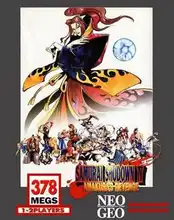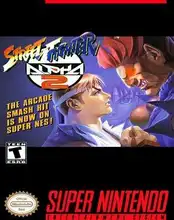Remember the satisfying thwack of a joystick, the frantic button mashing, and the roar of the crowd around an arcade cabinet? For many of us, that was the baptism by fire into the world of 2D fighting games. Before polygons took over, it was all about stunning pixel art, fluid animations (sometimes!), and the pure, unadulterated thrill of a one-on-one showdown.
These games weren't just about beating your opponent; they were about mastering intricate move lists, learning frame data before you even knew what frame data was, and soaking in the distinct personality of each fighter and stage. Let's take a trip back and celebrate the genre that defined a generation of gamers.
The Rumble Begins: Arcade Origins
The heart of the 2D fighting boom was undoubtedly the arcade. Street Fighter II didn't invent the genre, but it perfected the formula and ignited a global phenomenon. Suddenly, every arcade had a line for Ryu vs. Ken. The competition was fierce, the stakes felt high, and the experience was communal.
This era gave us iconic series like Mortal Kombat with its digitized gore and infamous fatalities, SNK's powerhouse lineup including Fatal Fury, Art of Fighting, and eventually the legendary King of Fighters series on the mighty Neo Geo, and countless others trying to grab a piece of the action.
Bringing the Battle Home: Console Ports
Of course, not everyone could live at the arcade (much to our parents' relief). The demand for home versions was massive. This led to a wave of console ports on the SNES, Sega Genesis, PlayStation, Saturn, and beyond.
These ports varied wildly in quality. Some, like Street Fighter II on SNES, were near-perfect translations that blew minds. Others, like certain early Mortal Kombat ports with missing frames and censored gore, felt like compromises. Then there were the ports on less traditional fighting consoles, like the N64, where the library was smaller and often featured more experimental or less polished titles, alongside gems like Killer Instinct Gold or the unique Rakuga Kids.
Icons, Innovators, and Pixel Powerhouses
The best 2D fighting games weren't just about graphics; they were about character, mechanics, and soul.
- Street Fighter series: The gold standard for special moves, combos, and strategic spacing. Landing a Shoryuken felt earned.
- Mortal Kombat series: Gritty, violent, and cool. The simple controls and focus on brutal finishers made it instantly popular, even if early entries had clunky hit detection.
- SNK's Fighters (Fatal Fury, KOF, Samurai Shodown): Often pushed the boundaries with complex systems, beautiful sprite work, and deep rosters, especially on the Neo Geo. Games like Voltage Fighter Gowcaizer even let you steal opponent moves!
- Guilty Gear / BlazBlue (Later Era): While some are modern, their commitment to gorgeous, high-resolution 2D sprites and incredibly deep, fast-paced mechanics kept the spirit alive long after others went 3D.
- Hidden Gems: Titles like Konami's arcade fighter Dragoon Might with its environmental interactions and unique super move system, or the fast-paced, all-female Asuka 120% Burning Fest show the creativity bubbling under the surface.
Not Every Punch Landed: The Duds
Let's be honest, for every Street Fighter II, there was a Shaq Fu. The genre was flooded with cash-ins and poorly executed ideas. Games like Clayfighter had a unique visual style but often suffered from choppy animation and questionable hit detection. Some console libraries, like the N64's, had a higher percentage of forgettable fighters (G.A.S.P.!! Fighters’ Nextream, anyone?) than true classics. Part of the retro charm is acknowledging these less-than-stellar moments too!
Why We Still Love 2D Fighters
Despite the occasional misstep, the love for 2D fighting endures. The sprite-based visuals have a timeless appeal. The focus on fundamental fighting game concepts – spacing, timing, execution – remains relevant. The distinct feel of pulling off a classic combo or landing a perfect anti-air never gets old.
Whether you're a veteran who spent your youth in arcades or a newcomer discovering these classics, there's a depth and charm to the pixelated battlegrounds that modern 3D fighters often struggle to replicate.
Reliving the Glory: Playing Today
Want to jump back into the ring? Luckily, it's easier than ever to play these retro 2D fighting games.
- Digital Stores: Platforms like GOG.com offer DRM-free versions of many classic PC ports (often enhanced for modern systems).
- Emulation: Running games via emulators like MAME (for arcade) or console-specific ones is a popular way, though legality varies by region and ownership of the original game.
- Collections & Ports: Modern consoles often get collections or updated ports of classic series.
- Archive.org: Sometimes hosts playable-in-browser versions of vintage PC fighting games (https://archive.org/).
So, fire up your emulator, dust off your fight stick, or just grab a controller. The pixelated warriors are waiting.
FAQ: Getting Back into the Ring
Q: What are the absolute essential retro 2D fighting games to play first? A: Start with the heavy hitters: Street Fighter II (any version, Super Turbo is a fan favorite), Mortal Kombat (MKII or UMK3 are great), and maybe Fatal Fury Special or King of Fighters '98 for a taste of SNK.
Q: Are modern 2D fighters like the old ones? A: Many modern fighters, like Guilty Gear Strive, BlazBlue, and even Street Fighter 6 (which has 3D models but retains 2D gameplay), build upon the foundations but often add more complex systems, online play, and stunning high-res sprites or 3D models that mimic 2D.
Q: Why do people prefer sprites over 3D models in fighting games? A: It's often a mix of nostalgia, appreciation for the pixel art form, and sometimes a preference for the clarity and distinctiveness of well-animated 2D sprites over early or mid-era 3D models that haven't aged as gracefully.
Q: Where can I find information on specific retro fighting game mechanics? A: Dedicated fighting game wikis (like Dustloop for Anime fighters or Shoryuken Wiki for Street Fighter/MK), old game manuals (often found on Archive.org), and YouTube tutorials from experts breaking down classic techniques are great resources.
(Note: Contextual links are examples; actual links should be verified and added during publishing if possible.)


